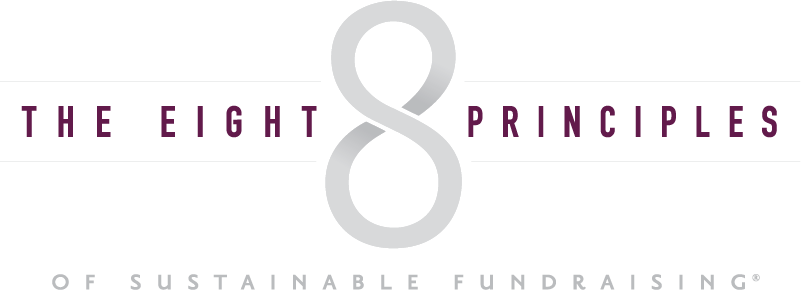In this guest post Maria Clark, Executive Vice President of Partnerships and Chief Evangelist for GoodUnited, shows us the path to returning to in-person events effectively.
While the return of in-person events is on the horizon, it’s hard for nonprofits to know what the future holds as far as fully virtual, fully in-person, and hybrid experiences. With so many unknowns, what can your nonprofit do to create a seamless transition from virtual to in-person events and keep the fun in fundraising?
Two of The Eight Principles can help you in this transition. Specifically:
- Principle 1: “Donors are the Drivers® is the foundational principle for all sustainable fundraising.”
- Principle 8: “Sustainable fundraising programs require a consistent and strategic investment in time and resources.”
At GoodUnited, we’ve helped nonprofits host successful virtual fundraising events during 2020 by leveraging social media. We’ll cover bridging the gap from virtual to in-person events— using social media and the two principles outlined about— through the following points:
- Top Challenges Facing the Transition from Virtual to In-Person
- Two Tips for a Seamless Transition During Uncertain Times
- Use challenge-style events to engage participants between larger campaigns.
- Embrace new technologies to raise your relationships with event supporters.
Let’s start with a discussion of the top challenges that nonprofits face in the transition back to in-person events, before covering two tips to help you surpass them. Let’s dive in.
Top Challenges with the Transition from Virtual to In-Person
Well over a year ago, nonprofits made a swift pivot to fully virtual events— the choice was either to go virtual or cancel events outright. The cobbled-together virtual events allowed organizations to recoup some of the funds they would have lost through an outright cancellation, but many events also experienced a decrease in participation and overall donations. The quick switch to virtual worked but it wasn’t ideal.
Now there’s a light at the end of the tunnel, with a slow transition back to in-person events on the horizon. But, the path to in-person events is also riddled with obstacles such as:
- The inability to predict the future turns of the pandemic. It’s hard to predict whether social distancing measures will increase or decrease going forward because so much is still unknown about the crisis. It can be hard for organizations to plan for events that will occur many months down the line, especially if that means investing in physical space that could end up going unused.
- Differing levels of comfort across attendees. Similar to the social distancing measures, it’s impossible to predict how comfortable your attendees will be with returning to in-person events. Some will be eager to engage in person while others could be put off by the idea and turn away from the event from the start.
- The hassle of back-and-forth plans. When plans change a number of times, it’s easy for would-be attendees to lose interest in the event— after all, it’s hard for them to plan around an event that’s regularly pivoting between in-person and virtual. The cost of this hassle could result in decreased participation.
- Increased need for aid across many communities. We’re still in the midst of a global pandemic and economic challenges, so there is an increased need across many communities. Some donors who would have given through your regularly scheduled events may be diverting their donations toward crisis-related causes, whether food banks or medical research.
These obstacles hold true whether you’re transitioning from fully virtual peer-to-peer fundraising to a hybrid model, Zoom-based gala events to an outdoor and socially-distanced variation, or anything in between. As a nonprofit fundraising professional, it’s up to you to navigate this transition in a way that addresses varying levels of comfortability and any turns in the pandemic.
This means that quick, hasty event planning isn’t the path to success— but rather, navigating carefully to avoid changing up your plans multiple times. So, what can you do in the meantime as your plans continue to solidify?
Two Tips for a Seamless Transition During Uncertain Times
Let’s cover two strategies that you can use to raise some revenue, recoup any losses that may result from the above obstacles, and continue growing your connections with supporters as you finalize your event strategy for 2021 and beyond. Whether you’re planning a full transition to in-person events, a hybrid model, or something else, these tips can help.
Use challenge-style events to engage participants between larger campaigns.
When it comes to bridging the gap from virtual events back to in-person, you’re probably considering this question as it relates to your next major fundraising event— for example, a springtime peer-to-peer walk-a-thon or annual holiday gala. These events are planning- and resource-intensive. Therefore, they aren’t those that you want to cobble together and adjust multiple times during the planning process.
However, you also want to avoid going long periods of time without engaging your nonprofit’s supporters due to a drawn-out event planning process. That’s why you should consider using quick, challenge-style events to interact with your supporters in the interim.
Challenge-style fundraising events refer to quick activities that your supporters can complete from the comfort of their own location with little resources, and raise funds for your nonprofit while doing so.
A great example of this virtual fundraising idea, pulled from this guide, is the virtual walk-a-thon. Here’s a breakdown of the event:
- Supplies Needed: Participants simply need space to walk and a pair of sneakers. Your organization needs to provide an online community space, such as a Facebook group, and a way for supporters to raise funds, such as individual Facebook fundraisers.
- How It Works: Create a Facebook group and send out advertisements inviting supporters to join. Over the course of the month-long challenge, participants walk 10,000 steps each day, raising funds along the way through a Facebook fundraiser.
- Why It Works: There is an incredibly low barrier to entry for this event, as participants can engage from the comfort of their own homes. Plus, the online community means that participants are able to connect with one another about their shared interest in your nonprofit, discuss training tips, and even donate to one another’s fundraisers.
If you follow the above example, all of the resources involved with putting together the event— the fundraising pages, the online community, any tools needed to participate— will be free. The only investment on behalf of your nonprofit would be any ads you purchase if you choose to use targeted ads to spread the word. According to 360MatchPro’s fundraising statistics, 56% of donors who are inspired to give by social media are inspired by Facebook— so, hosting a Facebook-based challenge event is a strong strategy.
Money isn’t the differentiator when it comes to assigning value to different donors. Remember the first principle from the introduction— Donors are the Driver. For your mission, what matters most is each donors’ individual connection to your cause and their motivation to advance it. Quick fundraising challenges, powered by groups, grow this connection for fruitful relationships going forward.
Embrace new technologies to raise your relationships with event supporters.
One of the greatest benefits of in-person events (and challenges of virtual events) is the opportunity to speak one-on-one and build relationships with supporters. With innovative messaging technologies, you can continue building these relationships in the interim as you wait to return to in-person experiences.
While some nonprofits shy away from automated messaging sequences, we’ve found that automated messaging through Facebook Messenger is an ideal solution to continue growing relationships with supporters. This is because:
- It can be personalized to each individual supporter. Whether fundraising tips, information about your nonprofit, or additional opportunities to engage— you can tailor your messaging sequences to the exact interests of each supporter.
- It solves the problem of limited staff capacity. Your nonprofit has a limited capacity to connect one-on-one with each supporter. With automated messaging, you can ensure every supporter has an engaging experience without eating up your staff’s time.
- It allows you to learn more about supporters. You can ask questions and log your supporters’ answers directly in your nonprofit’s constituent relationship management (CRM) system. This allows you to continue learning about those who support your nonprofit and tailor experiences more effectively going forward.
Remember principle eight from the introduction— “Sustainable fundraising programs require a consistent and strategic investment in time and resources.” While the goal of conversational messaging isn’t to ask for money, it does empower you to build strong relationships with each supporter. It will require an investment from your team to implement, but the combination of technology and human judgment will allow you to leverage data and build relationships that last.
The transition from fully virtual back to in-person events won’t happen overnight. It’s imperative that your nonprofit takes its time to strategize around this transitional period, to build trust in your supporters and continue raising funds effectively. By embracing challenge-style events and new communications technologies, you can bridge the gap from virtual to in-person events seamlessly. While you’re planning for the new frontier of events, you’ll be raising funds in the meantime. Good luck

Maria Clark is a nonprofit executive and technology evangelist with more than 30 years of industry experience. Today she serves as Executive Vice President of Partnerships and Chief Evangelist for GoodUnited, the social fundraising solution. Maria is a champion of the new and has fearlessly led change management efforts throughout her career. Maria lives with her husband Derek in Dallas, Texas, where she has a deep history with the nonprofit community.



